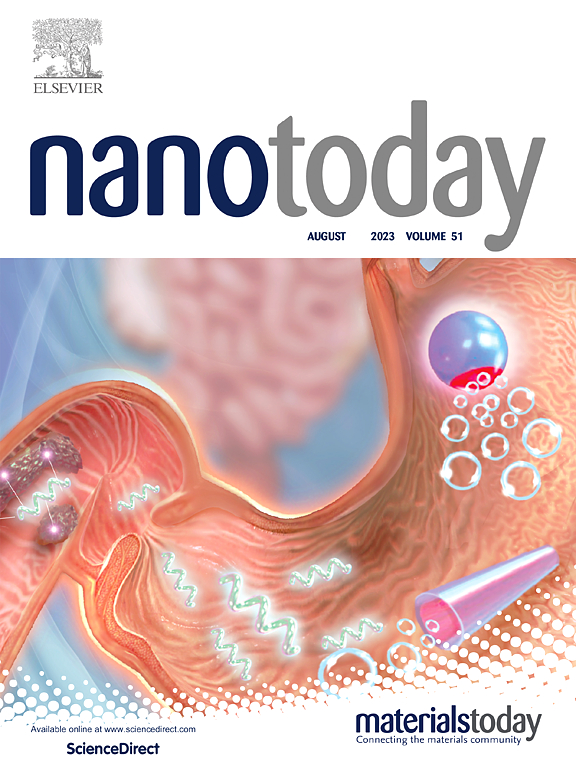In situ TEM study of phase transformation in oxide semiconductors
IF 13.2
1区 材料科学
Q1 CHEMISTRY, MULTIDISCIPLINARY
引用次数: 0
Abstract
Ultra-wide bandgap oxide semiconductors are essential for advanced high-power electronics into the next generation. Despite their theoretical advantages over traditional semiconductors such as GaN and SiC, fully harnessing their potential is hindered by an insufficient understanding of critical material properties, particularly phase formation. One significant challenge is controlling the various polymorphs to create well-defined heterostructures with engineered properties. This review provides an overview of the capabilities and applications of in situ transmission electron microscopy (TEM) in semiconductor research, specifically addressing how it enables the study of phase transformations and charge distributions at the atomic level. We begin by introducing modern in situ TEM systems, detailing their advanced features and functionalities that enable real-time observation of dynamic processes at the nanoscale. Next, we explore the studies of phase transformations in Ga2O3 and (AlxGa1-x)2O3, with a particular focus on the pioneering work conducted by our group. These studies reveal critical insights into crystallization pathways, phase stability, and phase diagrams, highlighting the role of in-situ TEM in elucidating how these factors influence material properties. Finally, we offer perspectives on the future contributions of in situ TEM techniques, emphasizing their potential to drive semiconductor research forward through enhanced spatial and temporal resolution, improved environmental control, and novel analytical capabilities. This review aims to equip readers with a fundamental understanding of in situ TEM and inspire further advancements in the field of semiconductor materials.
氧化物半导体相变的原位透射电镜研究
超宽带隙氧化物半导体对于下一代先进的大功率电子器件至关重要。尽管它们在理论上比传统半导体(如GaN和SiC)有优势,但由于对关键材料特性,特别是相形成的理解不足,阻碍了充分利用它们的潜力。一个重要的挑战是控制各种多晶体,以创建具有工程特性的定义良好的异质结构。本文综述了原位透射电子显微镜(TEM)在半导体研究中的功能和应用,特别介绍了它如何在原子水平上研究相变和电荷分布。我们首先介绍了现代的原位TEM系统,详细介绍了它们的先进特性和功能,可以实时观察纳米级的动态过程。接下来,我们探索了Ga2O3和(AlxGa1-x)2O3相变的研究,特别关注我们小组所做的开创性工作。这些研究揭示了结晶途径、相稳定性和相图的关键见解,突出了原位透射电镜在阐明这些因素如何影响材料性能方面的作用。最后,我们展望了原位TEM技术的未来贡献,强调了它们通过提高空间和时间分辨率、改善环境控制和新的分析能力来推动半导体研究向前发展的潜力。这篇综述旨在使读者对原位透射电镜有一个基本的了解,并激发半导体材料领域的进一步发展。
本文章由计算机程序翻译,如有差异,请以英文原文为准。
求助全文
约1分钟内获得全文
求助全文
来源期刊

Nano Today
工程技术-材料科学:综合
CiteScore
21.50
自引率
3.40%
发文量
305
审稿时长
40 days
期刊介绍:
Nano Today is a journal dedicated to publishing influential and innovative work in the field of nanoscience and technology. It covers a wide range of subject areas including biomaterials, materials chemistry, materials science, chemistry, bioengineering, biochemistry, genetics and molecular biology, engineering, and nanotechnology. The journal considers articles that inform readers about the latest research, breakthroughs, and topical issues in these fields. It provides comprehensive coverage through a mixture of peer-reviewed articles, research news, and information on key developments. Nano Today is abstracted and indexed in Science Citation Index, Ei Compendex, Embase, Scopus, and INSPEC.
 求助内容:
求助内容: 应助结果提醒方式:
应助结果提醒方式:


